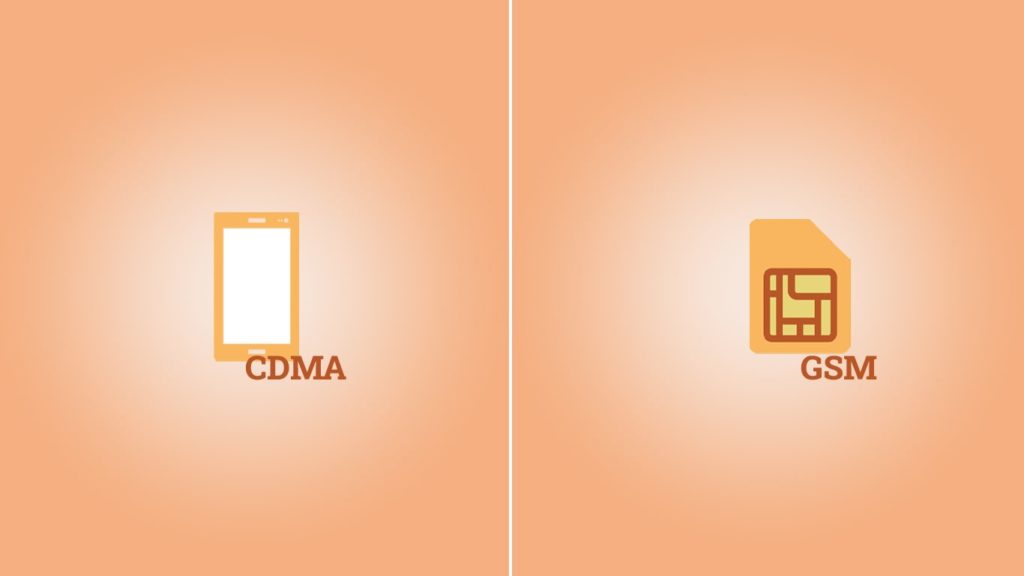
In today’s world of the Information Age, everybody has a cellphone. It has been becoming a necessity in many parts of the world. With mobile phone technologies, SIM card technology is also evolving. CDMA (Code Divison Multiple Access) and GSM (Global System for Mobile Communication) are the two most common technologies related to the mobile communication service industry. Both do the same job—convert the data from mobile phones into radio waves. We’re here to study the difference between GSM and CDMA SIM cards.
These two technologies are distinct based on how they transfer calls and data overall over a network. CDMA phones use CDMA mechanisms while GSM phones use TDMA and FDMA mechanisms for data and call transmission. The key difference is that GSM uses SIM cards to connect a mobile device to a network while CDMA SIM technology doesn’t require any, and instead relies on the device itself. To know the distinctions in detail, follow us as we analyze them on various benchmarks.
1. GSM and CDMA Technology Usage Differences
GSM uses wedge spectrum technology that is also known as a carrier. The carrier is divided into different time slots and each time slot is given to each user. That’s why until one outgoing phone call is over, no other user can have access to that time slot. CDMA on the other hand uses the spread spectrum technology to make the best use of the available bandwidth. Because of this, each user can transfer the data over the entire frequency spectrum at any given time.
2. Spectrum Frequency Difference in GSM and CDMA SIM Cards
The frequency spectrum of the GSM ranges from 850 MHz to 1900 MHz. The same frequency spectrum of 850 MHz to 1900 MHz is used by CDMA too. However, CDMA provides roaming to a limited scale while GSM allows global roaming.
3. Global Usage of Network Technologies
GSM is more popular globally than CDMA technology. About 80% of the mobile networks use GSM technology across 210 countries. The CDMA phones are mostly used in Japan, the USA, and Canada. The odds are slowly changing with the introduction of 4G LTE technology to CDMA devices.
4. SIM Card Use on GSM But Not CDMA
In a GSM phone, SIM cards are used to make the data or call transmission. SIM cards can be easily transferred from one cellphone to another. CDMA devices, in contrast, don’t have a SIM card. They use ESN (Electronic Serial Number) instead. As it doesn’t use a SIM card, the procedure of changing devices becomes difficult on CDMA and requires proper, often cumbersome, steps.
5. Network Exposure to Radiation
Compared to CDMA phones, GSM ones are 28 times more prone to radiation exposure. This is because GSM phones transmit wave pulses continuously even when not in use. CDMA ones send and receive waves only during calls, SMS, or any other form of data transmission.
6. Mobile Network Flexibility
GSM technology is more flexible than CDMA. That is because in GSM-based devices you can use a SIM card that can be inserted into any device. On the other hand, CDMA devices can be used only if ESN is registered in its database. If CDMA stops working on a phone, the whole device becomes useless and a new one is needed. In contrast, if GSM stops working, we only need to change the SIM card and not the entire device.
7. Rate of Data Transfer
The data transfer rate in CDMA is much higher than in GSM. EVDO (Evolution-Data Optimized) technology is used in the CDMA which provides a maximum download speed of 2 Mbps but GSM uses EDGE (Enhanced Data rates for GSM Evolution) which provides a maximum download speed of 384 Kbps. Again, things are prone to eventual improvements.
8. Mobile Security
The CDMA technology is safer, i.e., securer than the GSM technology. CDMA has inbuilt encryption which GSM lacks. That’s why signal detection is much more difficult and sometimes slower in CDMA.
How to Know if a Phone is CDMA or GSM Compatible?
There are two ways to figure out whether your phone is using CDMA or GSM technology. One is to simply check if your phone has a SIM slot. If it does, then it is a GSM phone. CDMA phones don’t have any such slots as they don’t employ SIM cards. However, the new CDMA phones with 4G technology use 4G LTE SIM cards.
Another way is to use your phone’s Settings menu:
- For iPhone users, open Settings > General > About > check for IMEI, ESN, or MEID numbers at the bottom of the menu.
- If you are an Android user, go to the Settings menu > System > About Phone > Status > examine IMEI, ESN, or MEID numbers in the bottom section.
In both cases, if you see an IMEI number then your phone is GSM. But if you see ESN or MEID number, your phone is CDMA-based. If you see both options, your phone supports GSM and CDMA.